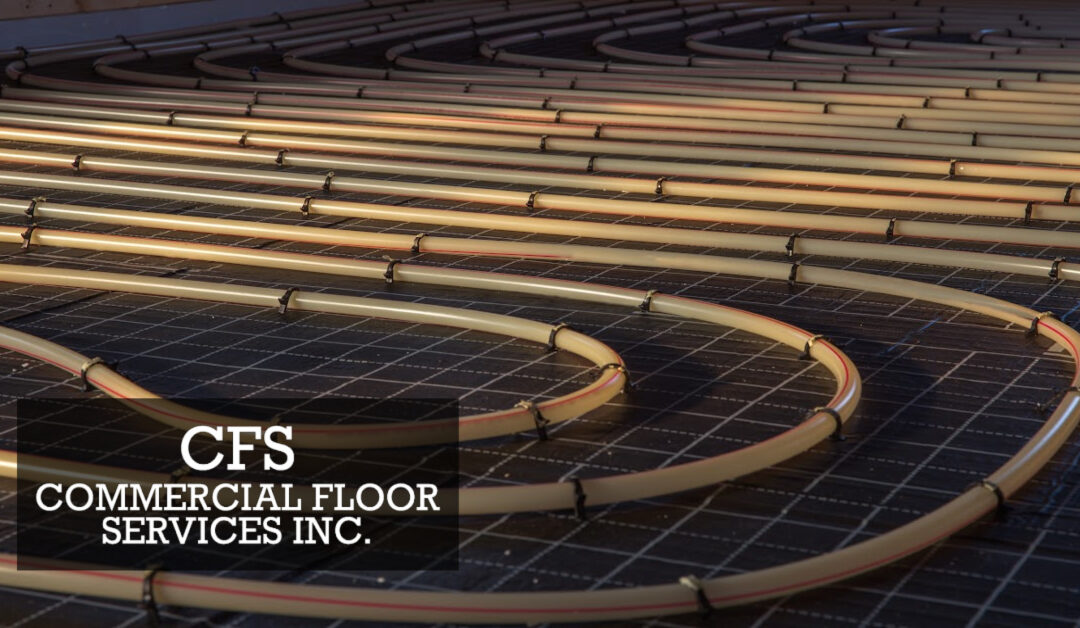According to the National Association of Home Builders, the average home buyer is willing to pay almost $7000 of additional upfront costs to save $1000 annually in utility bills. Whether you’re a new homeowner or have been in your house for years, the flooring in your home could help reduce your heating bills and make your home more energy efficient in general.
The energy efficiency of lighting, windows, and appliances are well known, but your floors also have a significant impact on how much energy you’re using and paying for. Here, we’re breaking down exactly how the flooring choices can lower your heating bill and reduce unnecessary energy use.
Heated Floors
There are currently two preferred systems for heated flooring: water-based and electric, and both provide numerous options for energy efficiency. Heated floors, or radiant heating systems are generally much more efficient than conventional heating systems.
Water-based or hydronic systems are the most popular and work by pumping hot water from a boiler through tubes laid out into the flooring.
Electric radiant floors consist of electric heating cables built into the subfloor. Electricity is relatively expensive, so they are most efficient when combined with a thermal mass like thick concrete floors.
Both radiant floor systems can help you heat your home more efficiently and save on heating costs. Unlike traditional furnace and radiator heating that pumps hot air into your home, heated floors are more efficient at retaining heat because once the floor is heated, it contains the heat for longer periods of time. This means that you will have to run your heating system less, and the floors will stay hot longer, keeping your home warm for longer and reducing the energy used and cost of heating.
Underfloor Insulation
Underfloor insulation entails adding an extra layer of insulation between the subfloor and the actual flooring and helps to reduce heat escaping through the ground. It’s most commonly done when installing a new floor, but existing floors can be retrofitted with insulating material as well.
Underfloor insulation is a great way to increase the heat and energy loss in your home. Even with well-insulated floors like carpeting, an extra layer of insulation can be extremely beneficial, especially in places susceptible to draft, like basements and garages. Between reducing the ability of heat escaping and of drafts coming up through the flooring, underfloor insulation can reduce the amount of heat loss in your home and the cost of your heating bill.
Stone and Tile
When it comes to actual flooring choices, natural stone and tile are both eco-friendly and energy-saving. Stone and tile absorb heat and sunlight all day and then slowly release it once it cools off in the evenings.
Even if it feels cool to the touch, tile and stone are more heat efficient than you might think. Thanks to the thermal mass of stone and tile, the rate at which they heat up and cool down is slow, which makes it possible for them to absorb heat all day long and then release it slowly enough to help with heat efficiency in your home, especially when combined with radiant flooring.
Carpet
Carpeting may be the most obvious and straightforward way to increase heat efficiency in your home. The plush, thick material that carpet is made of creates a barrier from the cold foundation.
Materials like marble and metal conduct heat and allow it to pass right through, but carpet does the opposite. Carpet is a poor conductor, which allows the heat in your home to stay where it is rather than passing through your floor. This keeps your home warmer and, when you step on it, allows you to retain your own body heat. Adding carpet flooring will help you increase heat efficiency in your home and reduce your energy and heating bills.
All of these flooring choices can improve your home’s heat efficiency and help to keep your heating bills low. If you’re interested in lowering your utility bills by making upgrades to your flooring, Commercial Floor Services can help.

